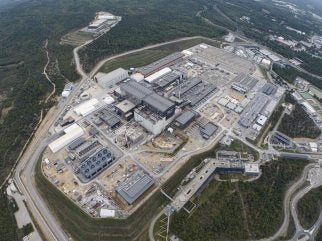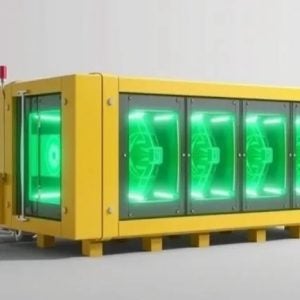
Fusion for Energy (F4E), the organisation managing Europe’s contribution to the International Thermonuclear Experimental Reactor (ITER), has signed a major civil engineering contract with the b.NEXT consortium (Assystem, Egis, Empresarios Agrupados). The members of the consortium have been involved in the project since 2010. The contract, valued at some €80m ($84m), is expected to run until 2030 with the possibility of an extension. It envisages the provision of services in the form of consulting, design, nuclear safety, construction and project management.
Building on their previous collaboration, the two parties will continue to work together in order to complete the civil and mechanical works performed at the ITER site in France. Europe is responsible for the delivery of nearly all ITER buildings, facilities, infrastructure and power supplies. The expertise of b.NEXT will serve to conclude the roads, trenches, lighting and networks on the platform. The consortium will also assist F4E with the supervision of the works in the Tritium building. In addition, it will contribute to the design and construction of facilities that will house generators and fuel storage tanks.
One of the main tasks of F4E is to work together with European industry, SMEs and research organisations to develop and provide a wide range of high technology components together with engineering, maintenance and support services for the ITER project. F4E was created by a decision of the Council of the European Union as an independent legal entity and was established in April 2007 for a period of 35 years.
The goal of ITER is to operate at 500 MW (for at least 400 seconds continuously) with 50 MW of plasma heating power input. Some 35 nations are collaborating in the construction of ITER, which began in 2010, many of them through their Domestic Agencies. The European Union is contributing almost half of the cost of its construction, while the other six members (China, India, Japan, South Korea, Russia and the USA) are contributing equally to the rest.
Construction began in 2010 and the original 2018 first plasma target date was put back to 2025 by the ITER council in 2016. However, in June this year, a revised project plan was announced which aims for “a scientifically and technically robust initial phase of operations, including deuterium-deuterium fusion operation in 2035 followed by full magnetic energy and plasma current operation”.
For more information visit: Fusion for Energy






